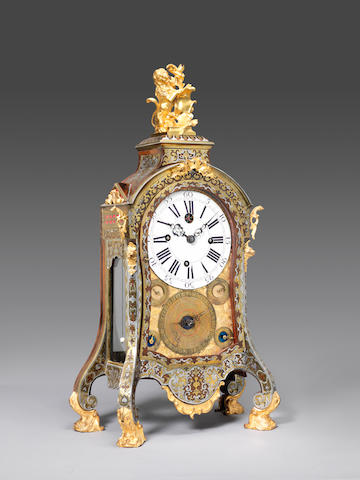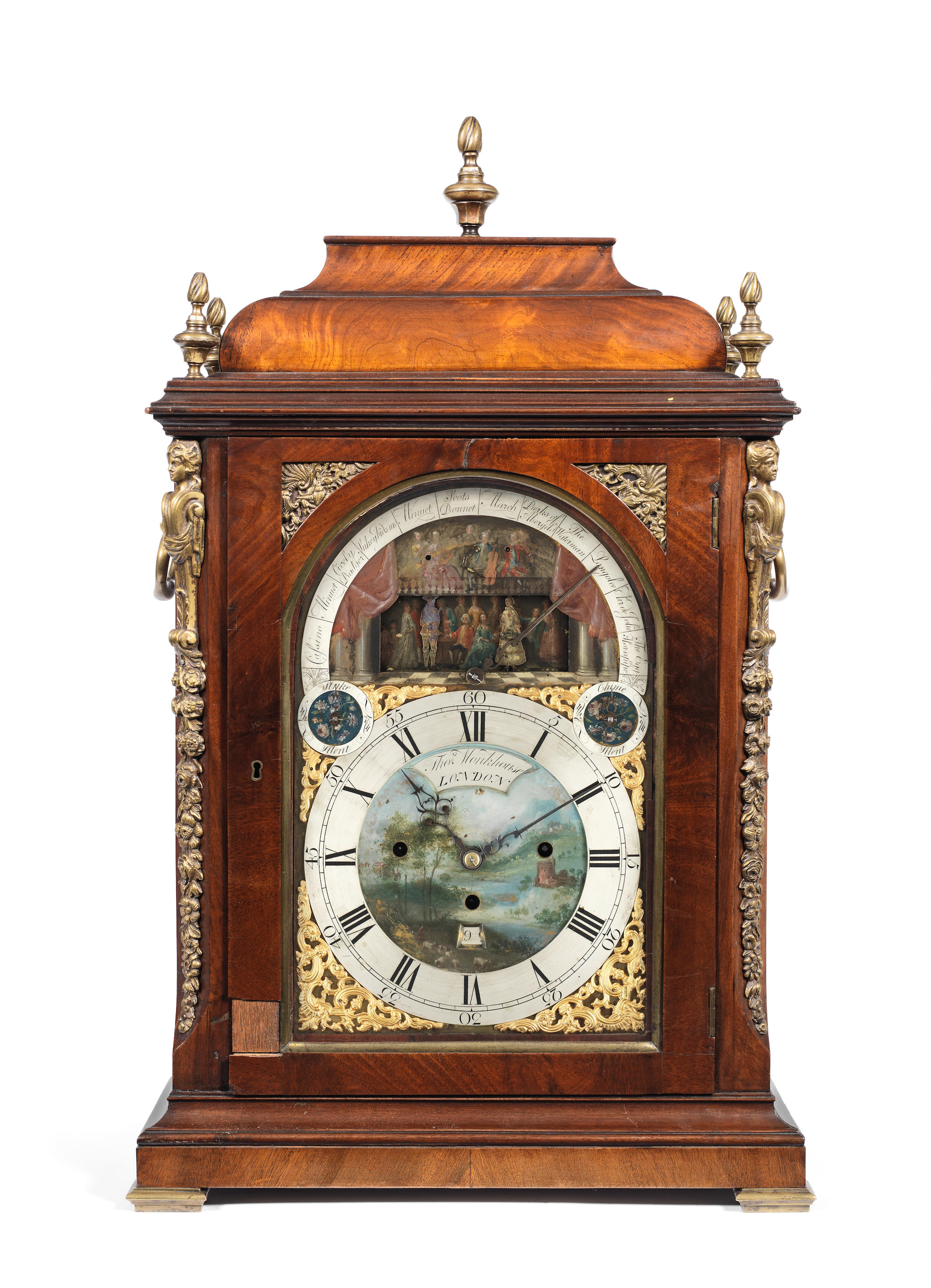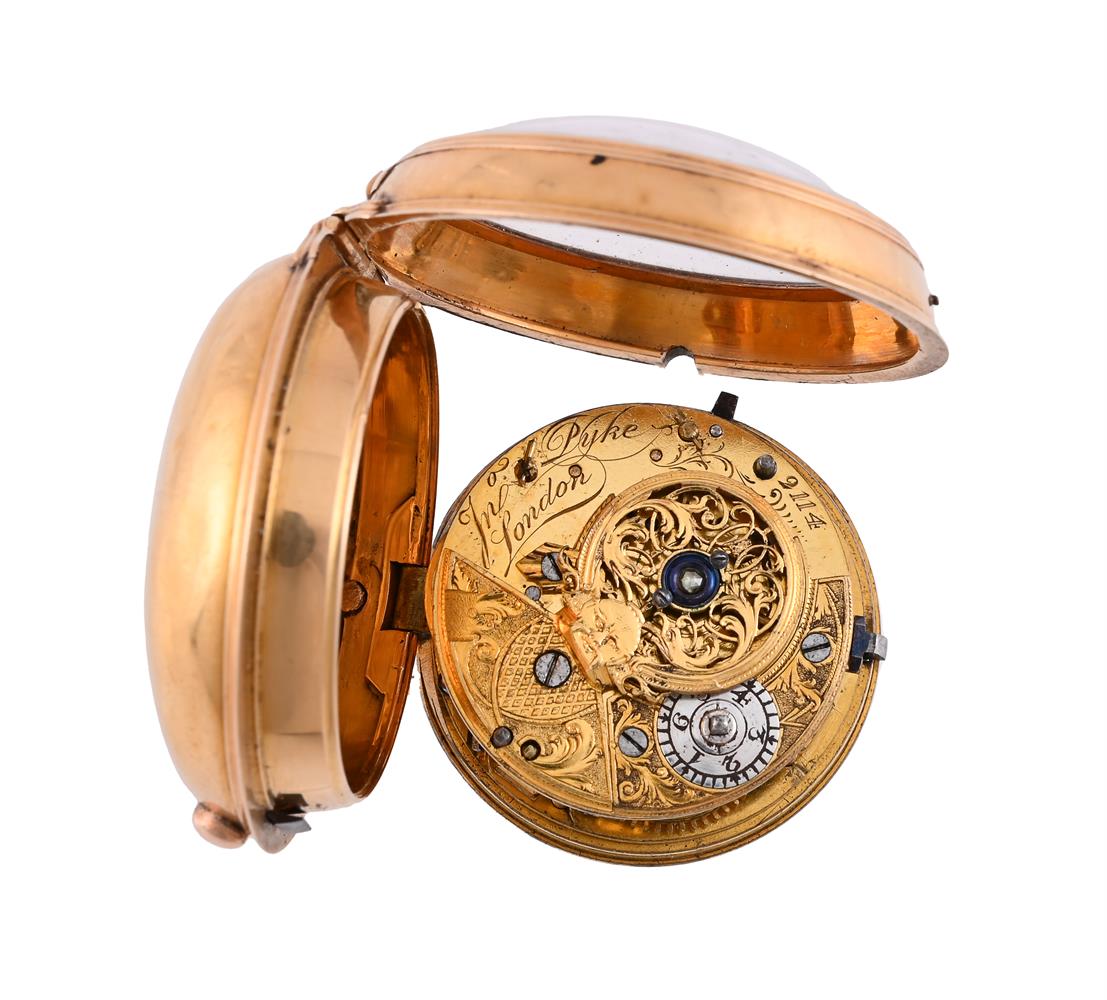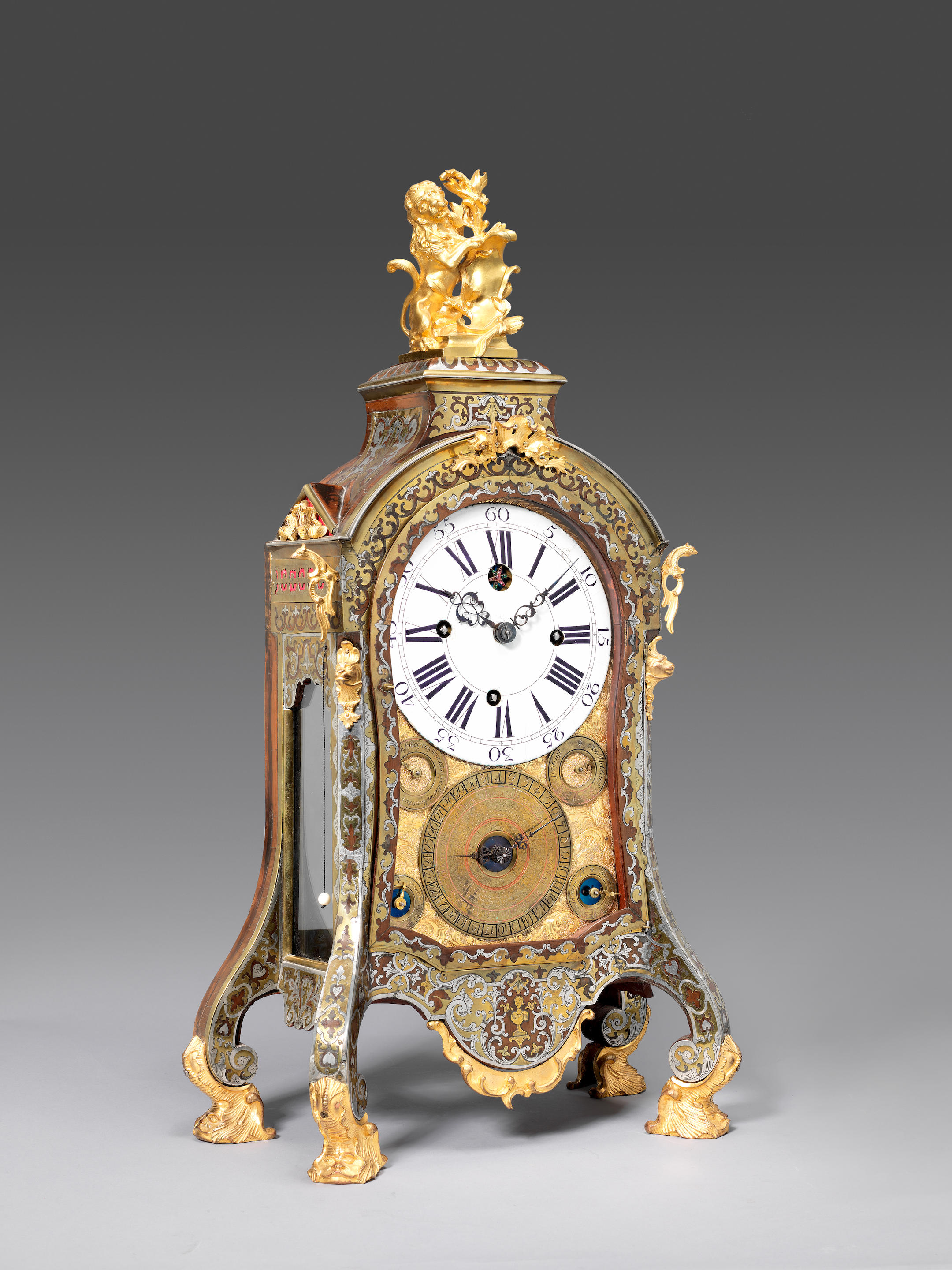Rare Fusee Musical Clock Base, c. 1815 Probably Geneva, playing four airs, with 78 single teeth in chevron-shaped sectional comb (complete), bass teeth at the periphery, treble teeth in the middle, fusee spring, curved tapering governor-cock, brass bedplate, external change/repeat, stop and instant stop controls, in mahogany-veneered case with lid, brass beading and brass feet, wd. 14 ¾ in. (37,5 cm), cylinder 8 ¼ in. (21 cm), some age splits in case, movement and comb in fine fully-restored playing condition. Tunes play for around 50 seconds. A peculiarity of this movement are the three (instead of the customary two) gears in the governor train. Arthur Ord-Hume illustrates a movement with similar features in the base of a London-made clock, noting: "Three wheels mean that the endless screw is driven upwards, so the lower bearing has a steel bearing plate". - Provenance: Collection of Luuk Goldhoorn. - Literature: Eduard C. Saluz, "Klang Kunst", exhibition catalog, 1996, p. 167 for a similar movement; Arthur Ord-Hume, "The Musical Box", p. 88, plates 37-38. - An early movement with fine arrangements and a bright, delicate tone. Musikwerk mit einzeln geschraubten Tönen im Uhrensockel, um 1815 Vermutlich Genf, 4 Melodien, 78 einzeln verschraubte Töne (komplett), BaÃtöne auÃenliegend, Diskanttöne in der Mitte, Schlüsselaufzug mit Schnecke und Kette, zur Spitze verjüngende Halterung des Geschwindigkeitsreglers, Messing-Bodenplatte, auÃenliegende Bedienhebel, Sofortstopphebel, Gehäuse mit Mahagonifurnier, mit Deckel, eingelegte Messingstreifen und MessingfüÃe, Gehäusebreite 37,5 cm, Walzenbreite 21 cm, leichte alterungsbedingte Beschädigungen am Gehäuse. Die Mechanik und der Kamm befinden sich im restaurierten und spielenden Zustand. Die Melodien spielen jeweils für ca. 50 Sekunden. Das Besondere an der Mechanik sind die 3 Zahnräder (statt normalerweise 2) zum Antrieb des Geschwindigkeitsreglers. - Herkunft: Sammlung von Luuk Goldhoorn. - Literatur: Eduard C. Saluz, "Klang Kunst", Ausstellungskatalog des schweizerischen Landesmuseums, 1996, S. 167, für eine ähnliche Mechanik; Arthur Ord-Hume, "The Musical Box", S. 88, Abb. 37-38. - Ein frühes Walzenspielwerk mit feinen Arrangements und klarem Klang.
Rare Fusee Musical Clock Base, c. 1815 Probably Geneva, playing four airs, with 78 single teeth in chevron-shaped sectional comb (complete), bass teeth at the periphery, treble teeth in the middle, fusee spring, curved tapering governor-cock, brass bedplate, external change/repeat, stop and instant stop controls, in mahogany-veneered case with lid, brass beading and brass feet, wd. 14 ¾ in. (37,5 cm), cylinder 8 ¼ in. (21 cm), some age splits in case, movement and comb in fine fully-restored playing condition. Tunes play for around 50 seconds. A peculiarity of this movement are the three (instead of the customary two) gears in the governor train. Arthur Ord-Hume illustrates a movement with similar features in the base of a London-made clock, noting: "Three wheels mean that the endless screw is driven upwards, so the lower bearing has a steel bearing plate". - Provenance: Collection of Luuk Goldhoorn. - Literature: Eduard C. Saluz, "Klang Kunst", exhibition catalog, 1996, p. 167 for a similar movement; Arthur Ord-Hume, "The Musical Box", p. 88, plates 37-38. - An early movement with fine arrangements and a bright, delicate tone. Musikwerk mit einzeln geschraubten Tönen im Uhrensockel, um 1815 Vermutlich Genf, 4 Melodien, 78 einzeln verschraubte Töne (komplett), BaÃtöne auÃenliegend, Diskanttöne in der Mitte, Schlüsselaufzug mit Schnecke und Kette, zur Spitze verjüngende Halterung des Geschwindigkeitsreglers, Messing-Bodenplatte, auÃenliegende Bedienhebel, Sofortstopphebel, Gehäuse mit Mahagonifurnier, mit Deckel, eingelegte Messingstreifen und MessingfüÃe, Gehäusebreite 37,5 cm, Walzenbreite 21 cm, leichte alterungsbedingte Beschädigungen am Gehäuse. Die Mechanik und der Kamm befinden sich im restaurierten und spielenden Zustand. Die Melodien spielen jeweils für ca. 50 Sekunden. Das Besondere an der Mechanik sind die 3 Zahnräder (statt normalerweise 2) zum Antrieb des Geschwindigkeitsreglers. - Herkunft: Sammlung von Luuk Goldhoorn. - Literatur: Eduard C. Saluz, "Klang Kunst", Ausstellungskatalog des schweizerischen Landesmuseums, 1996, S. 167, für eine ähnliche Mechanik; Arthur Ord-Hume, "The Musical Box", S. 88, Abb. 37-38. - Ein frühes Walzenspielwerk mit feinen Arrangements und klarem Klang.













Testen Sie LotSearch und seine Premium-Features 7 Tage - ohne Kosten!
Lassen Sie sich automatisch über neue Objekte in kommenden Auktionen benachrichtigen.
Suchauftrag anlegen